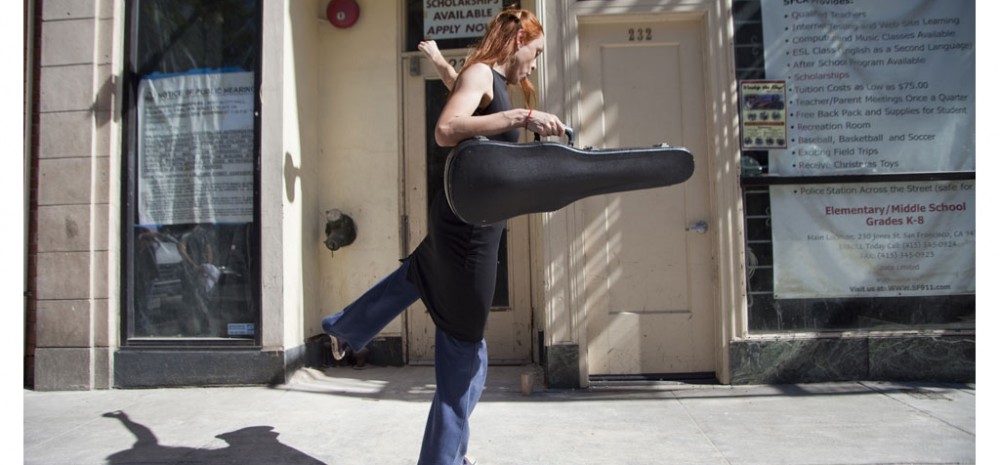Personal Geographies by Regina Miranda and Patricia Niedermeier
Based on narratives of homeless woman, collected via interviews in the Tenderloin, Personal Geographies is a collaborative performance created by choreographer Regina Miranda and performer Patricia Niedermeier. The interactive choreography, which evolves along the streets of the neighborhood, explores the causes that send women onto the streets, or into behaviors that are out of the norm, provoking a reflection on the myriad of emotional losses and survival struggles of women who suddenly see themselves without a home, becoming nearly invisible to the world around them.
Homeless women are invisible people. I used to be someone. But now I hide in my weight. And I don’t smile anymore. I also hide agreeing with people. I agree with anything. Better that way.
Revealing a human face of a population that is both extremely familiar and painfully foreign, Personal Geographies retraces homeless women’s walking paths, borrows their gestures and postures, transforms them in dance, and uses the meeting between performer and audience as trigger to redesign the streets of the Tenderloin as urban spaces for the expansion, contact, sharing and crossing of subjectivities.
Miranda’s work consistently investigates the lives of women that have been marked by experiences of geographical dislocations, of difficult trajectories, and the traversing of borders. Her own nomadic existence, propelled by an intense international artistic life, seems to intensify her perception of the divisions engendered by borders. Personal Geographies embodies an acute awareness of their presence, as well as the artist’s intense desire to go on trespassing and transgressing.
No I don’t feel ashamed, I don’t feel happy, just no feelings. It became easier that way. I don’t even feel that I exist. I don’t exist, I am a shadow. But, invisible, I can do a lot of things, invisible things. Since I don’t exist, I didn’t do them, right? It is a scary place to be
In the performance, the borders between art and real life, private and public, inside and outside, artists and audience, is blurred, and in the nomadic bodies of performance, that include the audience, the paradigm of us the included versus them the outsiders, the excluded, is questioned and reduced. Here the homeless body, rather then presented as a threat, or as an exotic other, is indicative or the potential transformative possibilities offered by less fearful human interactions, and revealing of what is hidden behind unusual behaviors and unpolished appearances.
